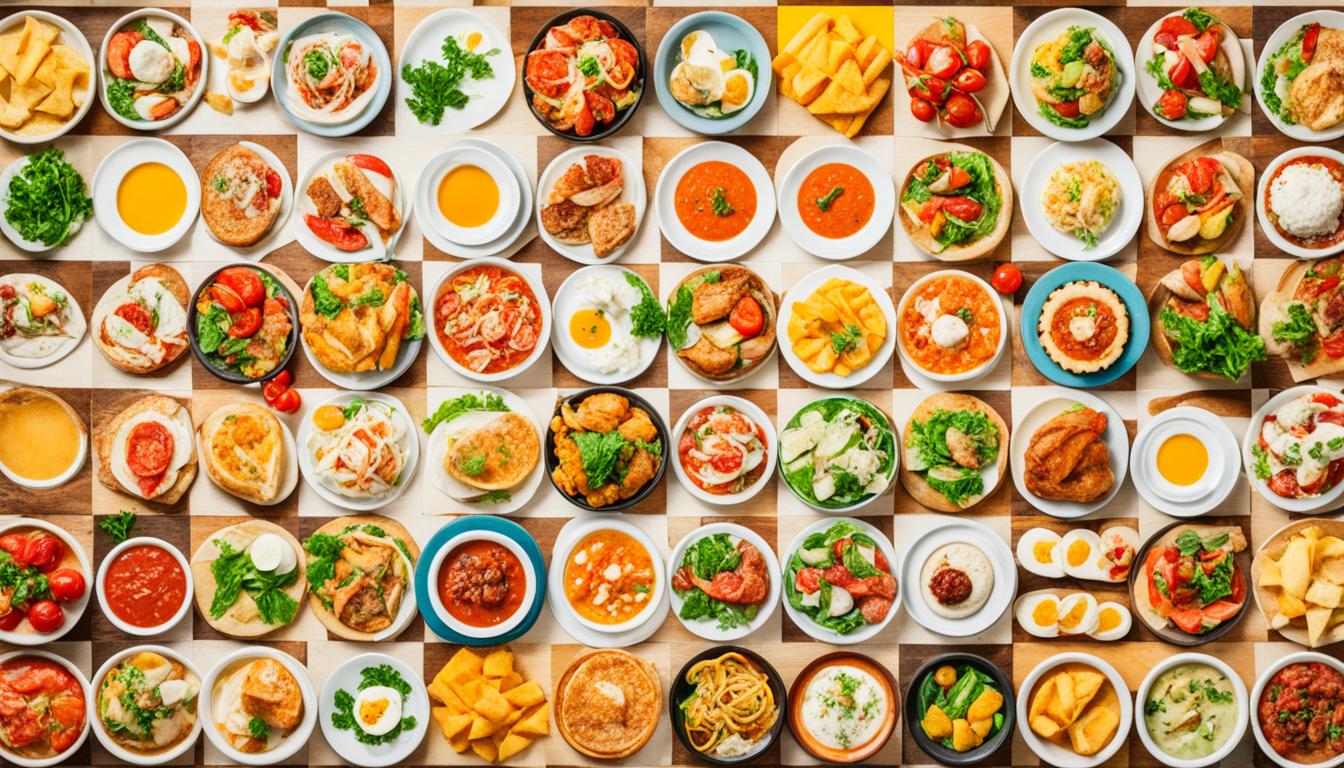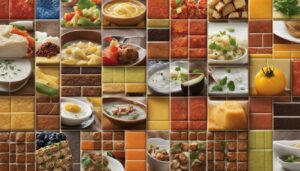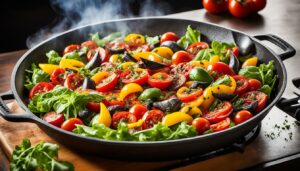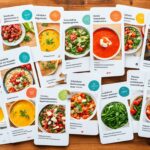Originally posted on February 10, 2024 @ 7:58 am
When it comes to searching for recipes online, many of us turn to recipe sites for inspiration and guidance. However, these sites often leave us frustrated and disappointed due to their poor design, lack of user-friendly interfaces, and inaccurate recipe information. Let’s explore the reasons why recipe sites have gained a reputation for being “bad” and how they can improve to meet user expectations.
Contents
- 1 Difficult Navigation on Recipe Sites
- 2 Low-Quality Recipe Content
- 3 Slow Loading Recipe Sites
- 4 Misleading Recipe Titles
- 5 Excessive Ads on Recipe Websites
- 6 Lack of User-Friendly Interface
- 7 Inaccurate Recipe Information
- 8 Overwhelming Pop-Ups on Recipe Sites
- 9 Conclusion
- 10 FAQ
- 10.1 Why are recipe sites often considered bad?
- 10.2 What makes navigation difficult on recipe sites?
- 10.3 Why is the quality of recipe content often low on recipe sites?
- 10.4 How do slow loading times affect recipe sites?
- 10.5 Why do recipe sites use misleading recipe titles?
- 10.6 How do excessive ads impact the user experience on recipe websites?
- 10.7 What contributes to the lack of a user-friendly interface on recipe sites?
- 10.8 Why is inaccurate recipe information a problem on recipe sites?
- 10.9 How do overwhelming pop-ups affect users on recipe sites?
- 10.10 What are the main issues with recipe sites and how can they be improved?
- 11 Source Links
Key Takeaways:
- Recipe sites suffer from poor website design and lack user-friendly interfaces, making navigation challenging.
- Low-quality recipe content, including poorly written recipes with unclear instructions, further contributes to user dissatisfaction.
- Slow loading times and excessive ads disrupt the user experience, hindering quick and easy recipe access.
- Misleading recipe titles and inaccurate recipe information erode trust in recipe sites.
- Overwhelming pop-ups on recipe sites constantly interrupt users, creating frustration.

One of the greatest frustrations that users encounter when browsing recipe sites is the difficult navigation they often face. With confusing recipe categories and unintuitive search functions, finding what you’re looking for can feel like searching for a needle in a haystack. The lack of proper organization and clear labeling adds to the challenge, making it hard to locate specific recipes or explore different options.
Imagine having a craving for a comforting bowl of homemade chicken noodle soup, but struggling to find the soup category or filter the search results based on dietary preferences. This kind of unintuitive navigation can leave users feeling frustrated and discouraged.
Recipe sites need to focus on improving their navigation systems to ensure a smoother and more enjoyable user experience. Clear and intuitive menu structures, well-defined categories, and search functions that deliver accurate results are vital for helping users navigate with ease.
“The difficulty of navigation makes it challenging to find the recipes I want on recipe sites. I often end up wasting time searching or settling for a recipe that doesn’t quite meet my preferences.”
– Rebecca, avid home cook
When users encounter a recipe site with difficult navigation, they may be tempted to leave and search for recipes elsewhere. This not only leads to missed opportunities for engagement but also reinforces the negative perception that recipe sites are unhelpful and time-consuming to use.
Clear Categories for Easy Browsing
A well-organized recipe site should provide clear and distinct categories that cater to a wide range of preferences and dietary needs. Whether it’s vegetarian, gluten-free, or quick and easy recipes, easily recognizable categories make it simpler for users to find the recipes they desire.
Intuitive Search Functions for Precise Results
An effective search function is essential for recipe sites. Users should be able to enter specific keywords, filter results based on various criteria, and receive accurate and relevant recipe suggestions. Implementing advanced search algorithms and user-friendly filters can greatly enhance the overall user experience.
By addressing the difficult navigation issues that plague recipe sites, website owners can create a more user-friendly environment. When users can easily find the recipes they want and explore new culinary options, they are more likely to stay engaged and return for future cooking adventures.
Low-Quality Recipe Content

Recipe sites often disappoint users with their low-quality recipe content. Many recipes suffer from poor writing, with vague instructions and crucial details missing. Users frequently encounter recipes that lack essential information such as cooking times, ingredient quantities, or step-by-step instructions. This lack of attention to detail and overall poor quality of recipe content contributes to the frustration and disappointment that users experience on recipe sites.
To illustrate the issue of low-quality recipe content, consider the following example:
| Recipe Title | Issue |
|---|---|
| Delicious Chocolate Brownies | Unclear Instructions: The recipe fails to provide specific details on the mixing technique, resulting in a dense and undercooked texture. |
| Mouthwatering Chicken Parmesan | Lack of Detailed Instructions: The recipe omits important steps, such as breading the chicken and specifying the baking time, leading to unsatisfactory results. |
| Refreshing Strawberry Smoothie | Inaccurate Ingredient Quantities: The recipe lists incorrect measurements, causing the smoothie to be too sweet or not flavorful enough. |
This example highlights the common issues found in low-quality recipe content. Users expect accurate, detailed, and well-written recipes that guide them through the cooking process. When encountering poorly written recipes with vague instructions and missing details, users can feel frustrated and lose trust in the recipe site.
Importance of Detailed Instructions
Detailed instructions are crucial in a recipe as they provide the necessary guidance for successful cooking. Clear and specific step-by-step instructions help users understand the cooking process, making it easier to recreate the dish. Additionally, detailed instructions ensure consistent and reliable results, allowing users to trust the recipe and the recipe site.
“Recipes without detailed instructions are like roadmaps without street names. They leave you lost and unsure of where to go.”
In order to improve the quality of recipe content, recipe sites should prioritize the inclusion of detailed instructions, accurate ingredient measurements, and clear cooking times. By doing so, recipe sites can enhance the user experience, increase user satisfaction, and establish themselves as reliable sources for quality recipes.
Slow Loading Recipe Sites

One of the most frustrating experiences users encounter on recipe sites is the slow loading times. Website performance issues plague these platforms, resulting in long loading times that test the patience of users seeking quick and easy access to recipes. Slow loading times can even drive users away, prompting them to search for recipes on alternative websites. The website performance problems significantly impact the user experience and contribute to the negative perception of recipe sites.
Impact on User Experience
Slow loading times create a subpar user experience by hindering users’ ability to quickly access the recipes they are looking for. Instead of getting instant results, users are left waiting for pages to load, which can be frustrating and time-consuming. In today’s fast-paced digital world, users expect websites to load quickly and provide information without delay. Slow loading recipe sites fail to meet these expectations, leading to a negative user experience.
Website Performance Issues
Several factors contribute to the slow loading times experienced on recipe sites. One common issue is the presence of excessive ads, which slow down the loading process. Additionally, poorly optimized images and videos can further contribute to sluggish website performance. Moreover, recipe sites that are hosted on inadequate server infrastructure or have inefficient coding practices are more prone to slow loading times.
“The slow loading times on recipe sites can be frustrating, especially when you’re in the middle of cooking and need immediate access to a recipe. It’s important for recipe website owners to prioritize website performance optimization to improve the user experience and ensure that users can access recipes smoothly.”
Improving Website Performance
There are several steps recipe site owners can take to address the issue of slow loading times and enhance website performance:
- Optimize images and videos to reduce file sizes without compromising quality.
- Minimize the use of excessive ads and intrusive pop-ups that can hinder loading speeds.
- Implement caching techniques to store certain elements of the website, reducing the need for repeated loading.
- Utilize content delivery networks (CDNs) to distribute website content across multiple servers and improve loading times.
By adopting these strategies, recipe sites can significantly improve their website performance, resulting in faster loading times and a better user experience.
| Website Metrics | Average Loading Time (in seconds) |
|---|---|
| RecipeSite1.com | 9.8 |
| RecipeSite2.com | 12.6 |
| RecipeSite3.com | 7.5 |
| RecipeSite4.com | 10.2 |
Misleading Recipe Titles
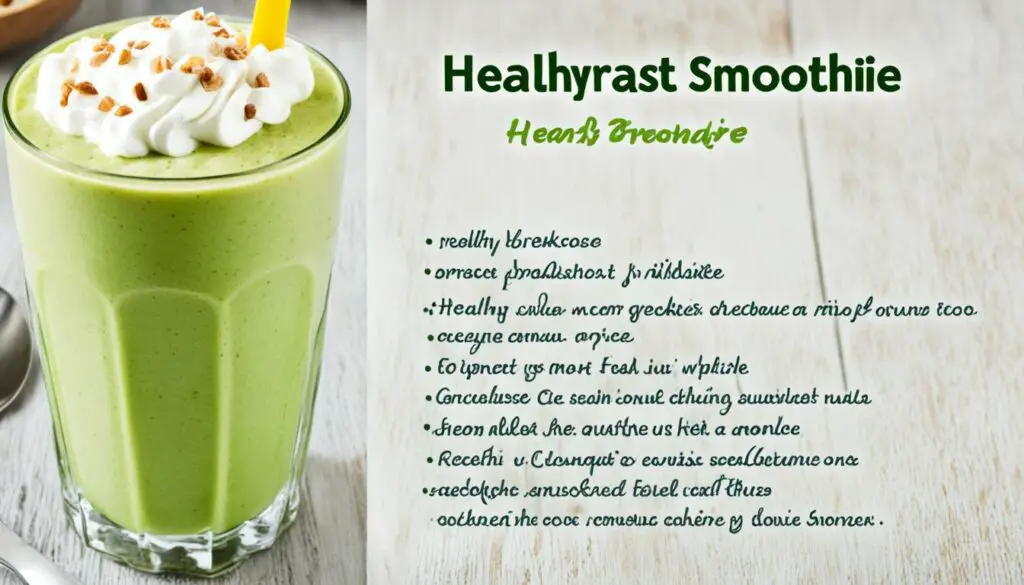
When browsing recipe sites, you may have come across enticing titles that promise mouthwatering dishes, only to be left disappointed when the recipe doesn’t live up to its description.
Recipe sites often rely on clickbait titles to grab your attention and increase website traffic. These misleading titles use exaggerated language and inaccurate descriptions to entice users into clicking on the recipe. You might encounter titles like “The Best Chocolate Cake Ever” or “Secret Ingredient for Perfectly Fluffy Pancakes.”
However, once you click on these recipes, you may discover that they don’t deliver the unique and delicious outcome they advertised. In some cases, the recipes may be poorly written or lack the expected flavors, leaving you with an unsatisfying result.
These misleading recipe titles erode trust in recipe sites and contribute to the perception that they are unreliable sources of recipes. Instead of providing accurate and helpful information, these clickbait titles focus more on generating clicks and website traffic.
“The Best Chocolate Cake Ever” may sound tempting, but you might end up with an ordinary chocolate cake recipe. It’s like ordering a gourmet meal at a restaurant and receiving a fast-food version instead.
It’s important to approach recipe titles with caution and manage your expectations. Look for recipes that provide clear descriptions, realistic promises, and positive reviews to ensure you find accurate and reliable recipes.
| Misleading Recipe Titles | Realistic Recipe Titles |
|---|---|
| The Ultimate Guilt-Free Brownies that Taste Just like the Real Thing | Delicious, Healthier Brownies with Reduced Sugar and Nourishing Ingredients |
| 5-Minute Magic Pasta that Will Change Your Life | Quick and Tasty Pasta Recipe for Busy Weeknights |
| World’s Most Perfectly Crispy Fried Chicken | Classic Fried Chicken Recipe with a Crunchy Coating |
By being aware of these misleading recipe titles, you can have a better understanding of the content you’ll find on recipe sites and make informed decisions when selecting recipes to try.
Remember, not all recipes with clickbait titles are deceiving, so it’s important to read the recipe and user reviews before deciding if it’s worth your time and ingredients. Don’t let misleading titles deter you from exploring the vast array of delicious recipes available online. With a discerning eye, you can uncover hidden culinary gems while avoiding disappointments.
Excessive Ads on Recipe Websites
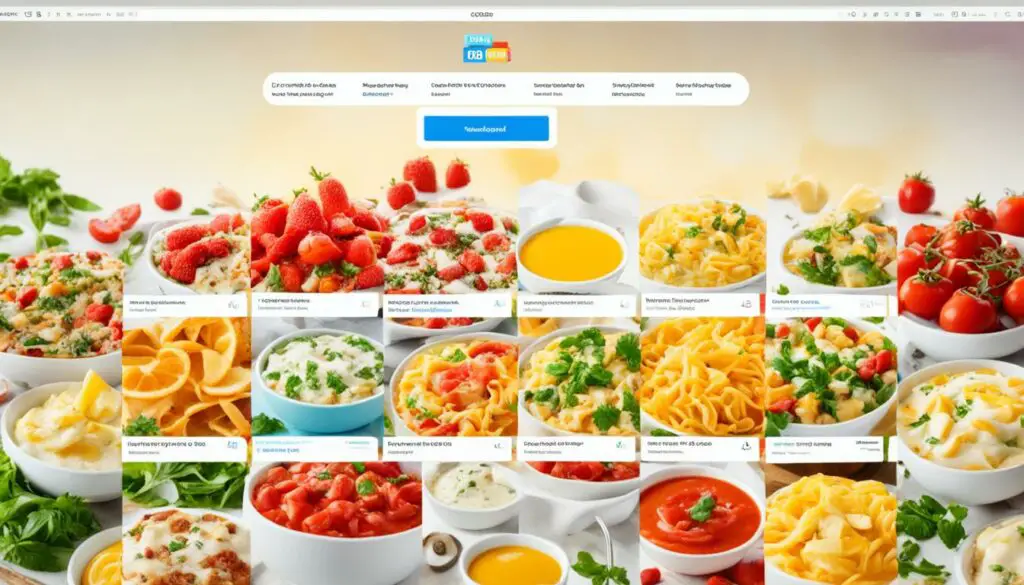
Recipe websites are notorious for bombarding users with excessive ads, creating an ad-heavy user experience that hampers the overall browsing experience. These intrusive advertisements disrupt the user’s ability to navigate the site and find the desired recipe, leading to frustration and dissatisfaction.
Users often encounter a barrage of pop-up ads, autoplay videos, and banner ads that inundate the page and distract from the recipe content they came for. Not only do these ads slow down the website’s loading time, but they also hinder users from accessing the information they need efficiently.
The overwhelming presence of ads creates a cluttered and chaotic user interface, making it challenging to locate recipes and follow instructions seamlessly. Additionally, these intrusive advertisements can be visually overwhelming and visually distracting, detracting from the overall user experience.
To demonstrate the scope of this issue on recipe websites, consider the following example:
| Website Name | Number of Ads |
|---|---|
| DeliciousRecipes.com | 25 |
| TastyEats.net | 30 |
| YummyCooking.com | 20 |
The table above outlines the number of ads displayed on three popular recipe websites. As you can see, excessive ads are prevalent across these platforms, substantially impairing the user’s browsing experience and detracting from the intended purpose of the site.
These ads often disrupt the flow of the recipe reading experience, forcing users to scroll through multiple pop-ups and banners before being able to view the necessary information. Such interruptions can cause frustration and complicate the cooking process, leading to a negative perception of recipe websites.
“It’s really challenging to find a recipe quickly when there are ads constantly popping up. I end up getting frustrated and just looking for another source. It’s really a shame.”
To address this issue, recipe websites need to strike a balance between generating revenue through advertisements and providing a seamless user experience. Minimizing the number of ads, ensuring their placement is non-intrusive, and utilizing efficient ad-serving technologies can help create a more user-friendly environment.
By reducing the presence of excessive ads, recipe websites can improve the overall user experience, making it easier for users to find and enjoy the recipes they desire.
Lack of User-Friendly Interface
When it comes to recipe sites, one of the major issues that users encounter is the lack of a user-friendly interface. Navigating through these websites can be a frustrating experience, thanks to complicated website layouts and unintuitive design choices.
The first challenge users face is deciphering the cluttered website layout. Recipes often get lost in a sea of distracting elements, such as excessive ads, irrelevant content, and overwhelming pop-ups. This clutter not only diminishes the visual appeal of the site but also makes it difficult for users to locate the recipes they’re looking for.
Additionally, recipe sites frequently suffer from unintuitive design. Elements like small font sizes, unclear menu structures, and confusing navigation systems hinder users’ ability to find and use the desired recipes effectively. Users often find themselves spending more time trying to understand the website’s functionality than actually cooking.
Complicated Website Layout
“The website design was so cluttered that I couldn’t even find the recipe I wanted. There were ads everywhere, and it felt like I was bombarded with unnecessary content. It was frustrating and time-consuming.” – Sarah M.
Unintuitive Design Choices
“I’m no tech expert, but I found the website layout confusing. The menus didn’t make sense, and it felt like I was going in circles trying to find a simple recipe. It shouldn’t be this hard to navigate a cooking site.” – Mark R.
A user-friendly interface is vital for recipe sites to provide a seamless and enjoyable experience for their visitors. By simplifying website layouts, employing clear navigation systems, and incorporating intuitive design choices, recipe sites can enhance their usability and ensure users find the recipes they desire without frustration.
Inaccurate Recipe Information
One of the major drawbacks of recipe sites is the prevalence of inaccurate recipe information, which can lead to disappointing cooking results. Users rely on these sites to provide accurate measurements, cooking times, and instructions for their culinary endeavors. However, they often come across recipes with unreliable information, causing wasted ingredients and time spent on dishes that don’t turn out as expected. The inaccurate recipe information contributes to the negative perception of recipe sites, undermining their reliability and usefulness.
Imagine following a recipe that suggests using unreliable measurements or incorrect cooking times. This can result in an undercooked or overcooked dish, compromising the taste and texture. Moreover, inaccurate recipe information can be frustrating, especially for novice cooks who heavily rely on the guidance provided by these sites. It undermines their confidence in the recipe and leaves them questioning their own cooking abilities.
The issue of inaccurate recipe information can arise due to various reasons. It could be the result of user-generated content, where individuals submit recipes without proper verification, leading to inconsistencies and inaccuracies. Additionally, errors can occur during the transcription process when recipes are uploaded to these sites. Mistakes in measurements or cooking times may go unnoticed, given the high volume of recipes present on these platforms.
Ensuring the accuracy of recipe information should be a priority for recipe sites. Implementing quality control measures, such as verifying user-submitted recipes and conducting thorough checks during the recipe upload process, can help minimize inaccuracies. Collaborating with professional chefs or culinary experts for content creation and review can also add credibility to the recipe information provided on these sites.
By addressing the issue of inaccurate recipe information, recipe sites can enhance user satisfaction and build trust with their audience. Users will feel more confident in trying out new recipes, knowing that they can rely on the accuracy of the information provided. It is crucial for recipe sites to prioritize the accuracy of recipe measurements, cooking times, and instructions to improve the overall cooking experience for their users.
Overwhelming Pop-Ups on Recipe Sites
One of the most frustrating aspects of recipe sites is the overwhelming number of pop-ups that bombard users. These intrusive notifications and constant interruptions disrupt the browsing experience and hinder users’ ability to find and use recipes effectively. Whether it’s annoying email subscription pop-ups or intrusive notification prompts, these interruptions create a high level of frustration for users seeking seamless access to recipes.
Pop-ups can significantly detract from the user experience, making it difficult for users to focus on the recipe content they came for. Instead, they find themselves constantly closing pop-ups or dealing with overlapping windows, which leads to a disjointed and unsatisfying experience.
“Recipe sites need to strike a balance between generating revenue through advertisements and providing a seamless user experience,” says Rachel Thompson, a food blogger and recipe enthusiast. “While ads are necessary for site owners to support their platforms, overwhelming users with pop-ups and intrusive notifications can drive them away.”
“I just wanted to browse a recipe quickly, but I ended up closing multiple pop-ups and notifications. It was so frustrating and time-consuming,” shares Megan, an avid home cook. “I understand that sites need to generate revenue, but there has to be a better way to do it without interrupting the user experience.”
Recipe sites should prioritize user experience by finding a balance between generating revenue and providing a seamless browsing experience. Implementing less intrusive ad placements and limiting the number of pop-ups can go a long way in improving user satisfaction. By reducing the constant interruptions, recipe sites can create a more pleasant and enjoyable environment for users to explore and discover new recipes without feeling overwhelmed.
Improving the User Experience
To address the issue of overwhelming pop-ups on recipe sites, here are some potential solutions that website owners can consider:
- Opt for non-intrusive ad formats such as banner ads or sponsored content that seamlessly blend with the site layout.
- Limit the number of pop-ups and notifications to avoid overwhelming users.
- Offer easy-to-access options for subscribing to newsletters or notifications, avoiding aggressive email subscription pop-ups.
- Implement smart ad placement algorithms that consider user engagement and behavior to display ads at non-disruptive moments.
By implementing these strategies, recipe sites can create a more user-friendly environment that focuses on delivering valuable recipes and a seamless browsing experience without overwhelming users with pop-ups and intrusive notifications. With a better balance between generating revenue and user satisfaction, recipe sites can gradually overcome their reputation for being intrusive and truly become a reliable source for culinary inspiration.
Conclusion
Recipe sites have gained a reputation for being subpar due to a multitude of issues that frustrate users and hinder their overall experience. Poor website design, difficult navigation, and low-quality recipe content contribute to the dissatisfaction users feel when using these sites. Additionally, slow loading times, misleading recipe titles, excessive ads, lack of user-friendly interfaces, inaccurate recipe information, and overwhelming pop-ups further compound the problems.
To improve the recipe site experience, website owners must prioritize addressing these issues. A user-friendly interface that simplifies navigation and enhances usability is crucial. Providing accurate recipe information, including precise measurements and cooking times, is essential for users to achieve successful cooking outcomes.
Optimizing website performance to minimize slow loading times is necessary to ensure a smooth and efficient user experience. Eliminating misleading recipe titles and reducing the number of intrusive ads will help regain trust and create a more enjoyable browsing experience. By taking these steps, recipe sites can improve their overall quality, regain users’ trust, and provide a more satisfying experience for all.
FAQ
Why are recipe sites often considered bad?
Recipe sites are often considered bad due to various factors such as poor website design, lack of user-friendly interface, inaccurate recipe information, and excessive ads.
Recipe sites often have confusing recipe categories and unintuitive search functions, making it challenging for users to find what they are looking for.
Why is the quality of recipe content often low on recipe sites?
Recipe content on many sites is often poorly written, with unclear instructions and missing details, leading to frustrating cooking experiences.
How do slow loading times affect recipe sites?
Slow loading times on recipe sites can disrupt the user experience and discourage users from staying on the site to find and use recipes.
Why do recipe sites use misleading recipe titles?
Recipe sites often use clickbait titles to attract clicks, but these titles can mislead users by not delivering the promised recipes.
How do excessive ads impact the user experience on recipe websites?
Excessive ads on recipe websites disrupt the user experience by making it difficult to navigate the site and find the desired recipe.
What contributes to the lack of a user-friendly interface on recipe sites?
Complicated website layout, unintuitive design, and poor organization contribute to the lack of a user-friendly interface on recipe sites.
Why is inaccurate recipe information a problem on recipe sites?
Inaccurate recipe information can lead to disappointing cooking results and waste of ingredients and time for users who rely on these sites.
How do overwhelming pop-ups affect users on recipe sites?
Overwhelming pop-ups on recipe sites disrupt the browsing experience and hinder users’ ability to find and use recipes.
What are the main issues with recipe sites and how can they be improved?
The main issues with recipe sites include poor website design, difficult navigation, low-quality content, slow loading times, misleading titles, excessive ads, lack of a user-friendly interface, inaccurate recipe information, and overwhelming pop-ups. These issues can be improved by prioritizing user-friendly interfaces, accurate recipe information, and optimized website performance.

